Last week I had one of the best Model drawing sessions in a long time. The model was fantastic. She went for poses I have not seen anyone else stand in for 5 minutes. Very dynamic poses. It was a joy to draw and it was very inspiring. I am very satisfied with the drawings I produced. Not that it in it self is a goal, in nude drawing, but it never hurts. But it got me thinking about an article 4 months back, about the searching for gestures in drawing a model.
If the drawings after a session is good or bad, it doesn´t really matter. What matters is the process and what you learned from it. What you took with you away from the session.
I like to draw on A2 paper with a thick graphite pencil that doesn’t allow me to go into details. The size is important because it forces me to draw with my whole arm rather that just the movement of my wrists. It cheats me into sketching in longer searching lines than constructing lines of the wrist. Me and Claus, a guy from my studio always discuss this when we review each others drawings. We talk about the approach we have when drawing. Claus likes to draw anatomy. He likes to understand how everything is put together. He uses model classes for studying anatomy.
Me I like the gestures, and capturing the weight of the poses. If I get that right, I do not care much if the leg looks like a real leg. I know that if I professionally need it to look like a real leg I can look up reference for muscle anatomy when needed. But capturing real gestures and movement and weight is difficult to look up afterwards.
It makes me think about what and how you focus in your own training. One might say; “Jesper you should study anatomy and gesture drawing not one or the other” yeah, that’s true, but the mind can only do so much. I think that in order to train myself the best I analyses what it is that I think I do right when sketching, and what I do wrong.
When I sketch a nude model I try not to sketch in outline. I try not to use the line as a matter of capturing shape in-between to outlines. At least in my mind. I use directional lines for the first 10 seconds and then starts shaping it up in sketchy lines. It reminds me of clay. I sketch in chunks and blobs rather than details and line: As soon as I have the shape roughly – this is about 30 to 45 seconds in – I start adding the lines. Because now I have the full disposition of the figure and the weight and the gesture and the placements of limbs, the direction of spine and face. The rest is just filling in the blanks and adding the details.
This is not very different from when I am designing character or doing a concept art figure. I start by doing a pose and a gesture that fits the personality and then goes on to designing details later.
So What I take away from the drawing sessions is the feeling of weight and gesture in a figure. The dynamic motion of a twisted pose. I get a better sense of rhythm in a bent leg or the twisting of the torso. All these things is something I can use when sketching characters for a fantasy painting or a Dungeons and dragons character. Doing nude models has definitely made me better at adding swagger to a thief or poise to a wizard.
It also ties into how you approach your day to day training.
I was never one of those that had the iron mindset to do studies, daily drawings just for themselves or light and color practice. So I invented my own system. I tried to train myself while working on an assignment. I said to myself: “you are going to paint this Viking attack on a beach anyway, might as well learn how to do chainmail”, So while doing the assignment I just focused harder on the chainmails. I found some paintings of an artist I liked;
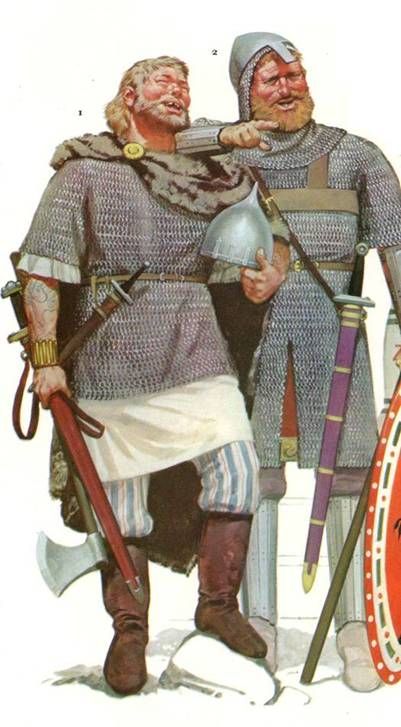 |
| Angus Mcbride |
Angus Mcbride, and I put on a chain mail I had at the studio. And I learned how to make mail convincingly. It was added to my visual vocabulary, so to speak. Next assignment I was doing rocks and I focused hard on understanding how rocks behave in bounce light and how I could capture it in simple brush strokes. Later on I did a snow landscape and really focused on snow. Then pine trees, beard, chrome, limestone, nibbles, clenched fists, and so on…Over the years it all adds up.
I think the focused training is something that has really helped me a lot, not only to become a better artist, but mostly it has kept it a fun experience for me. I constantly feel that I get a little better at something. Like a weightlifter adding a small amount of weight at every lift. It gives me a satisfaction that I know I learn something from each painting or each drawing. I take something away into my book of stuff I can draw.
I feel that in drawing the nude model. Had I just drawn what was in front of me. Trying to copy the models joints, the light the volume of her body. Had I seen and drawn her form an anatomical point of view, I would have added something to my mind bank that I do not care much for adding. I want to draw characters that feel alive and that has animation. For that I need to capture pose, directional lines and gestures . I guess it is up to you to decide, in every drawing actually, what you want to take away from this?
Just a thought: if you do not ask your self this question. If you do not focus on anything specific. It is just another drawing. Just another lifting.


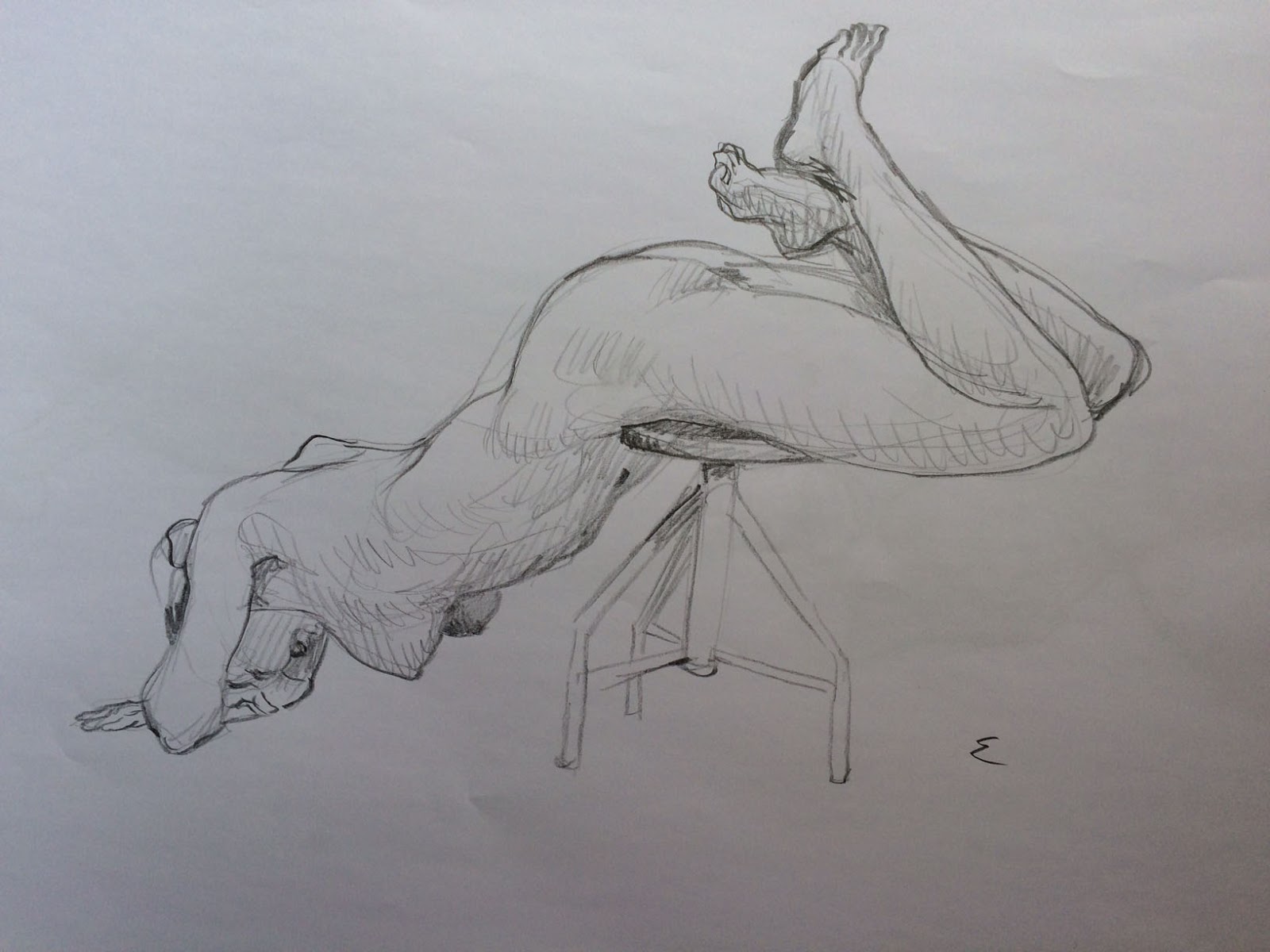
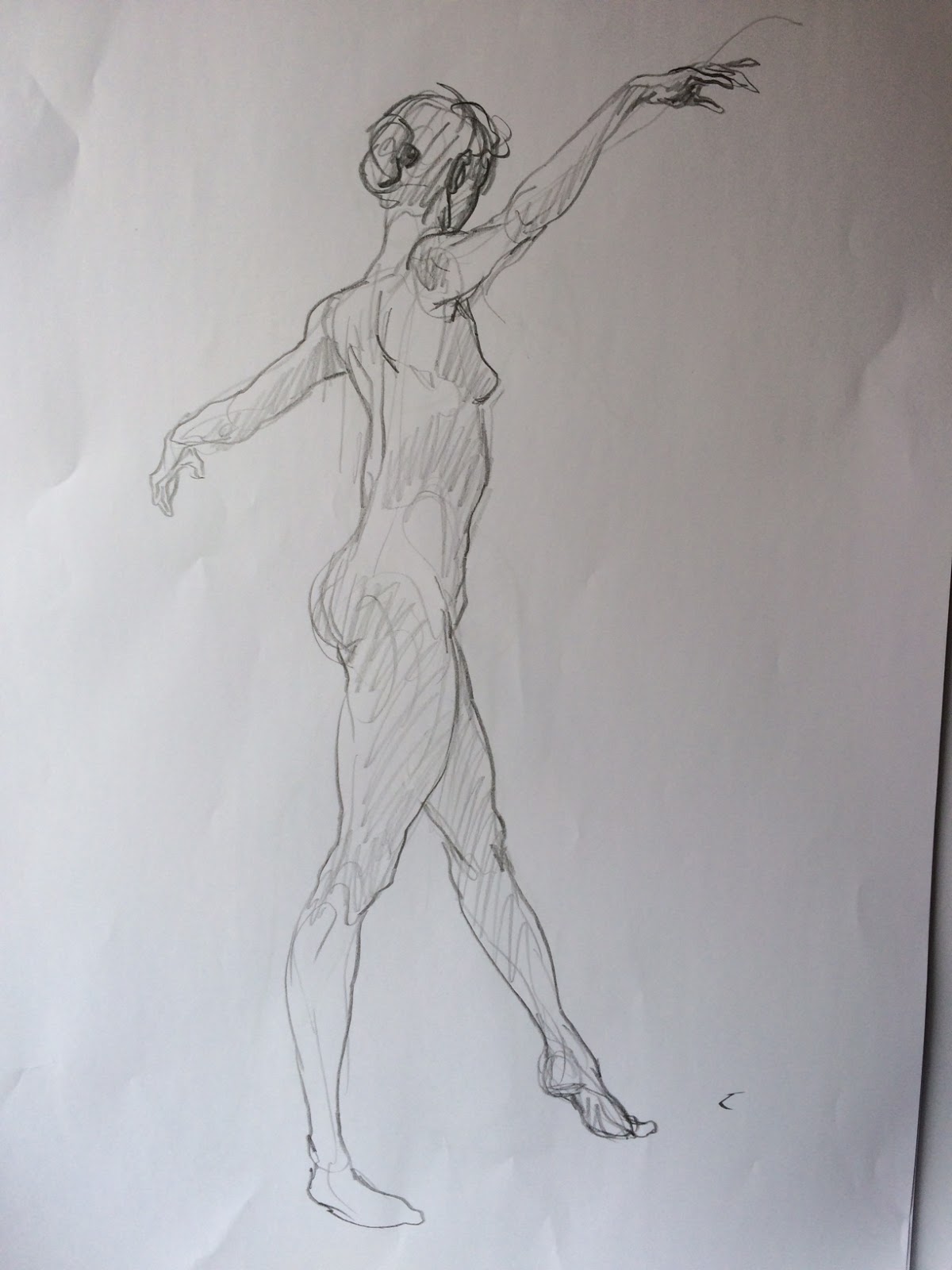
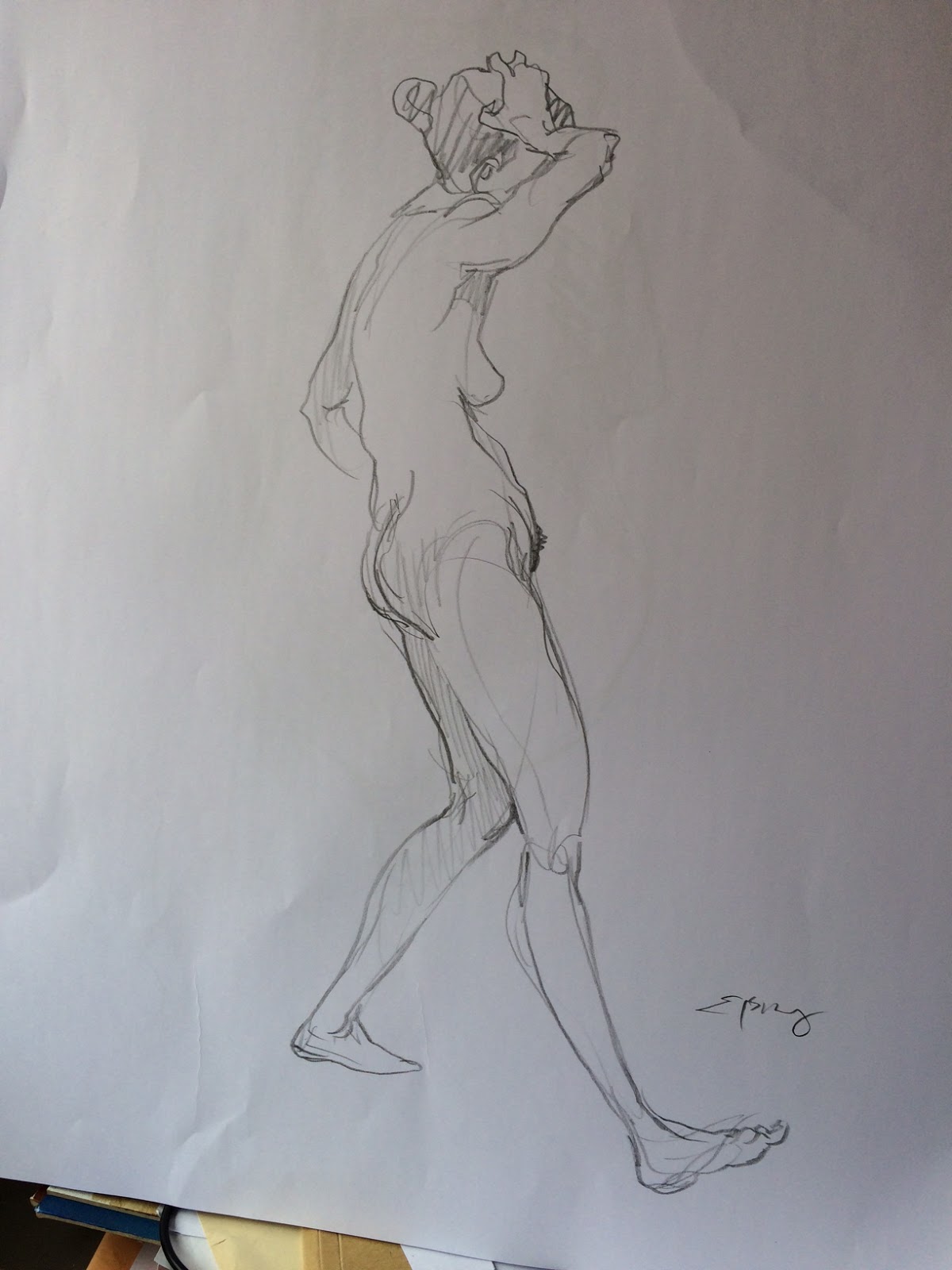

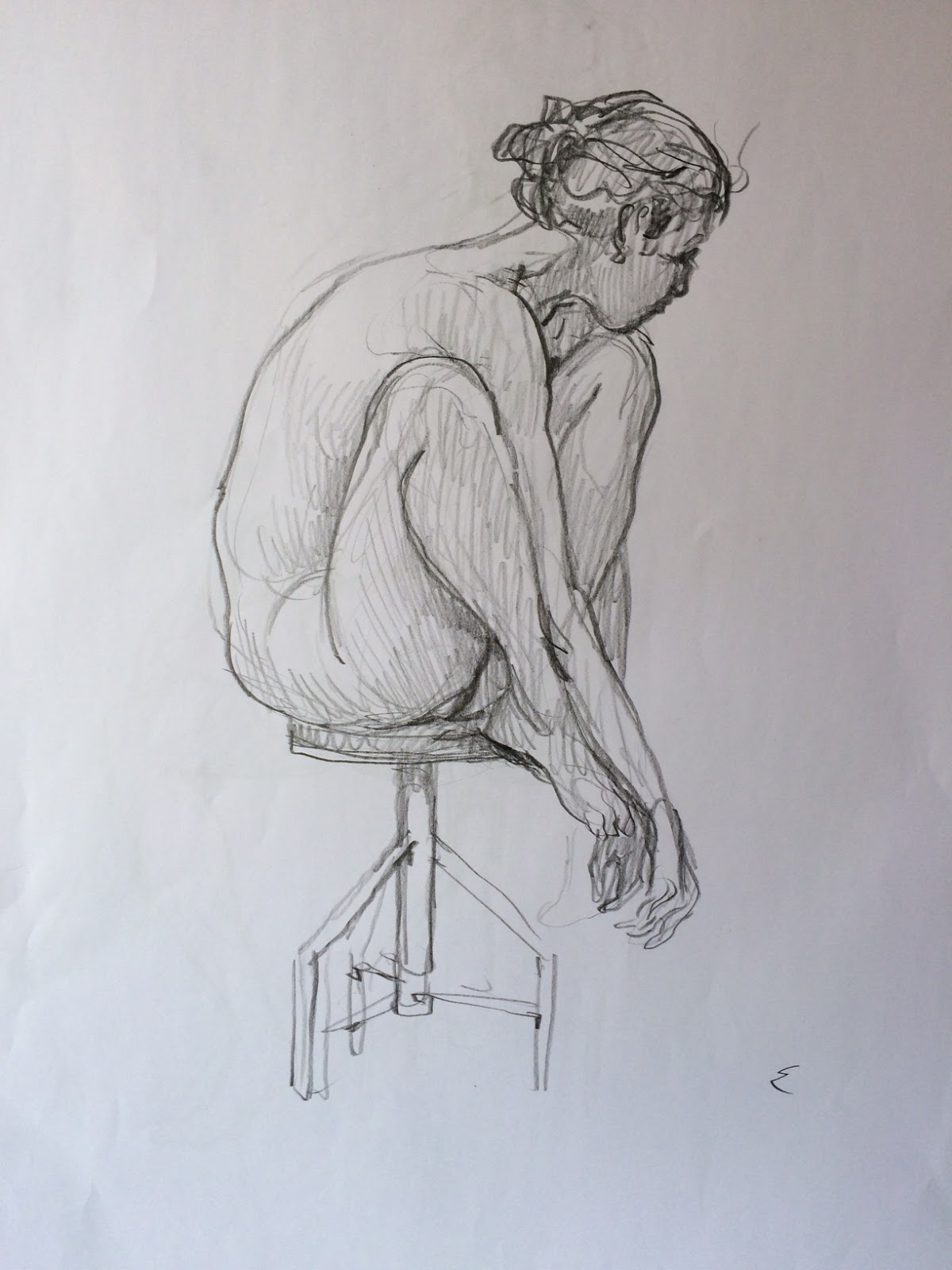
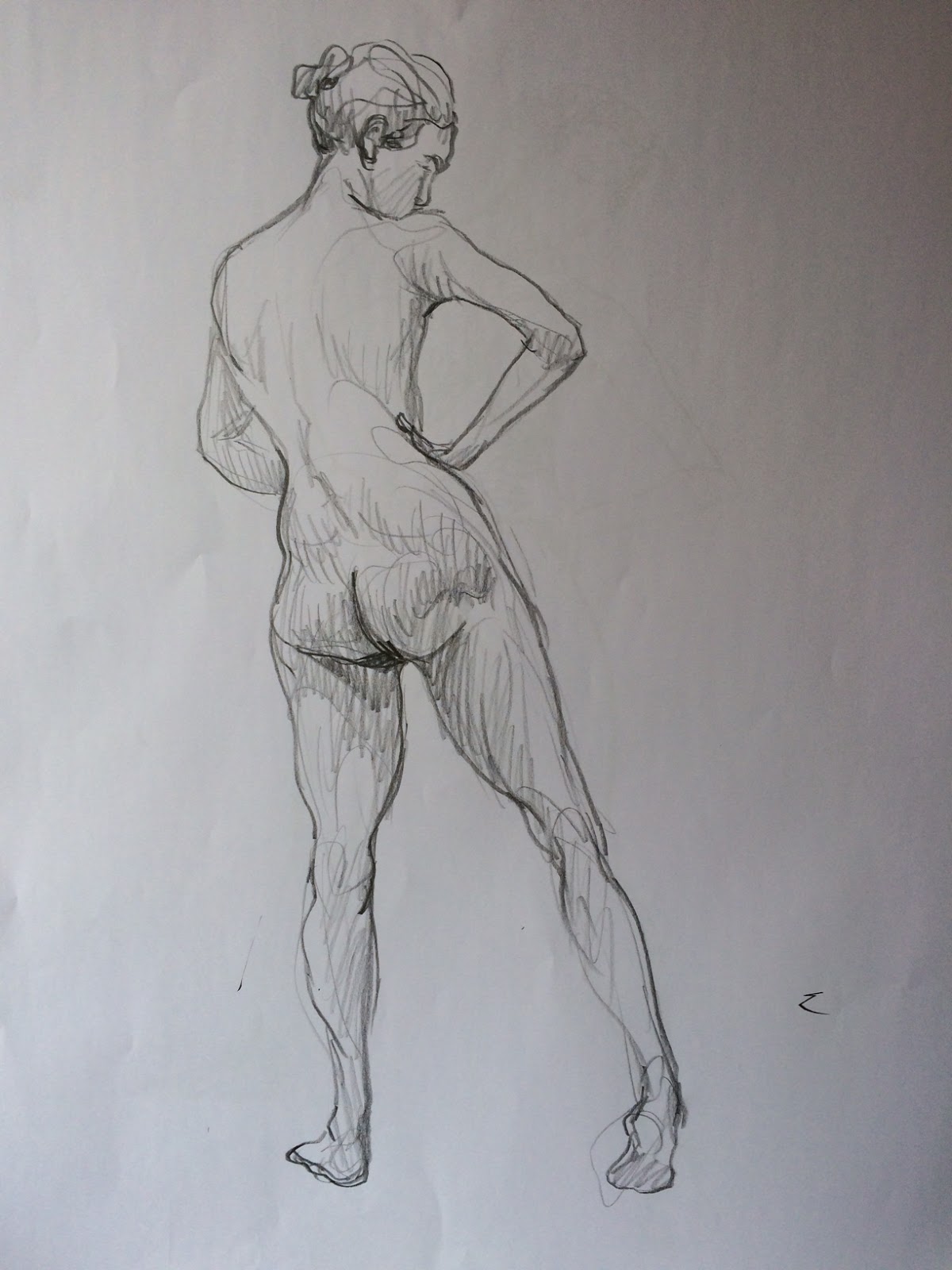
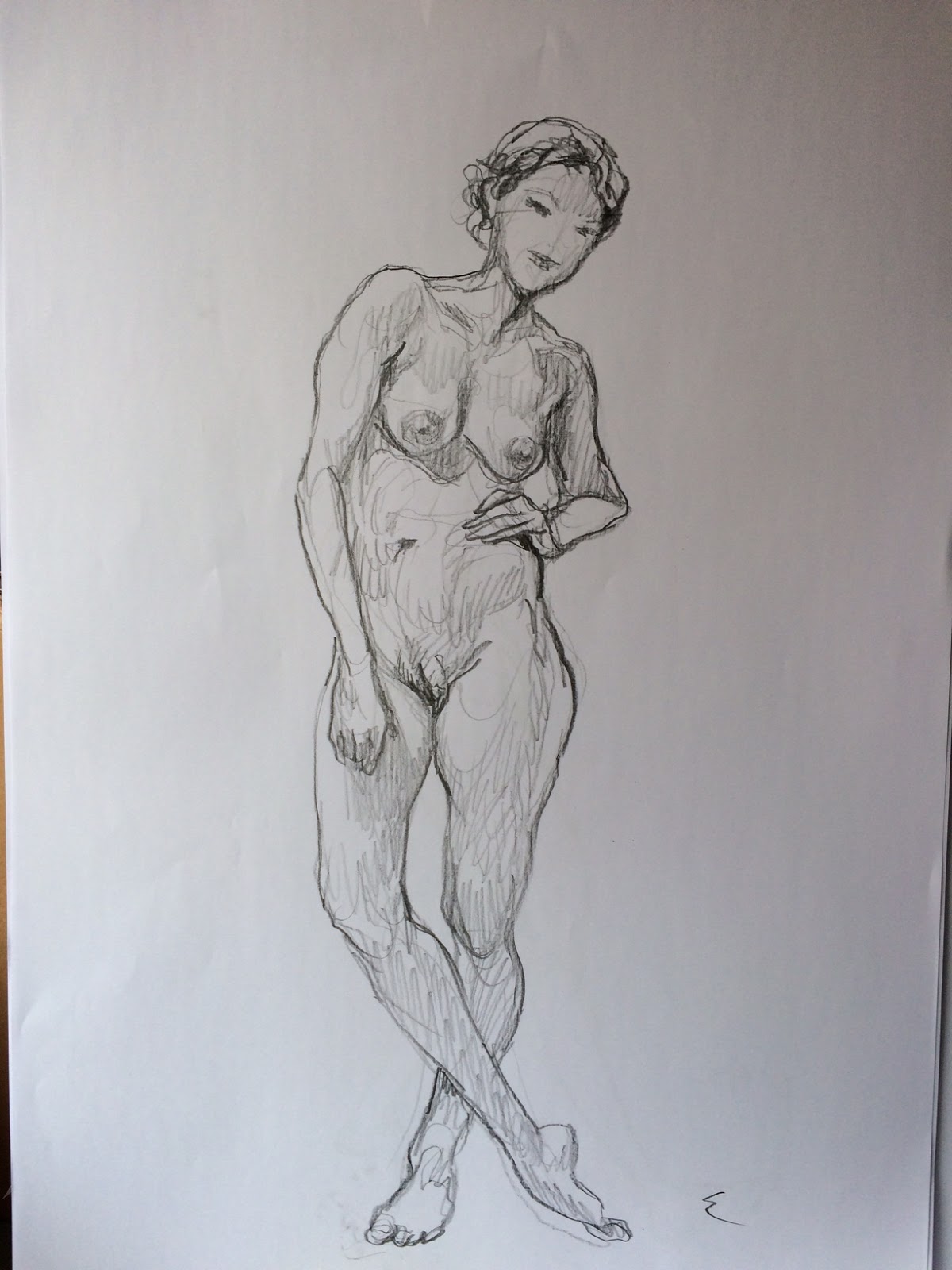
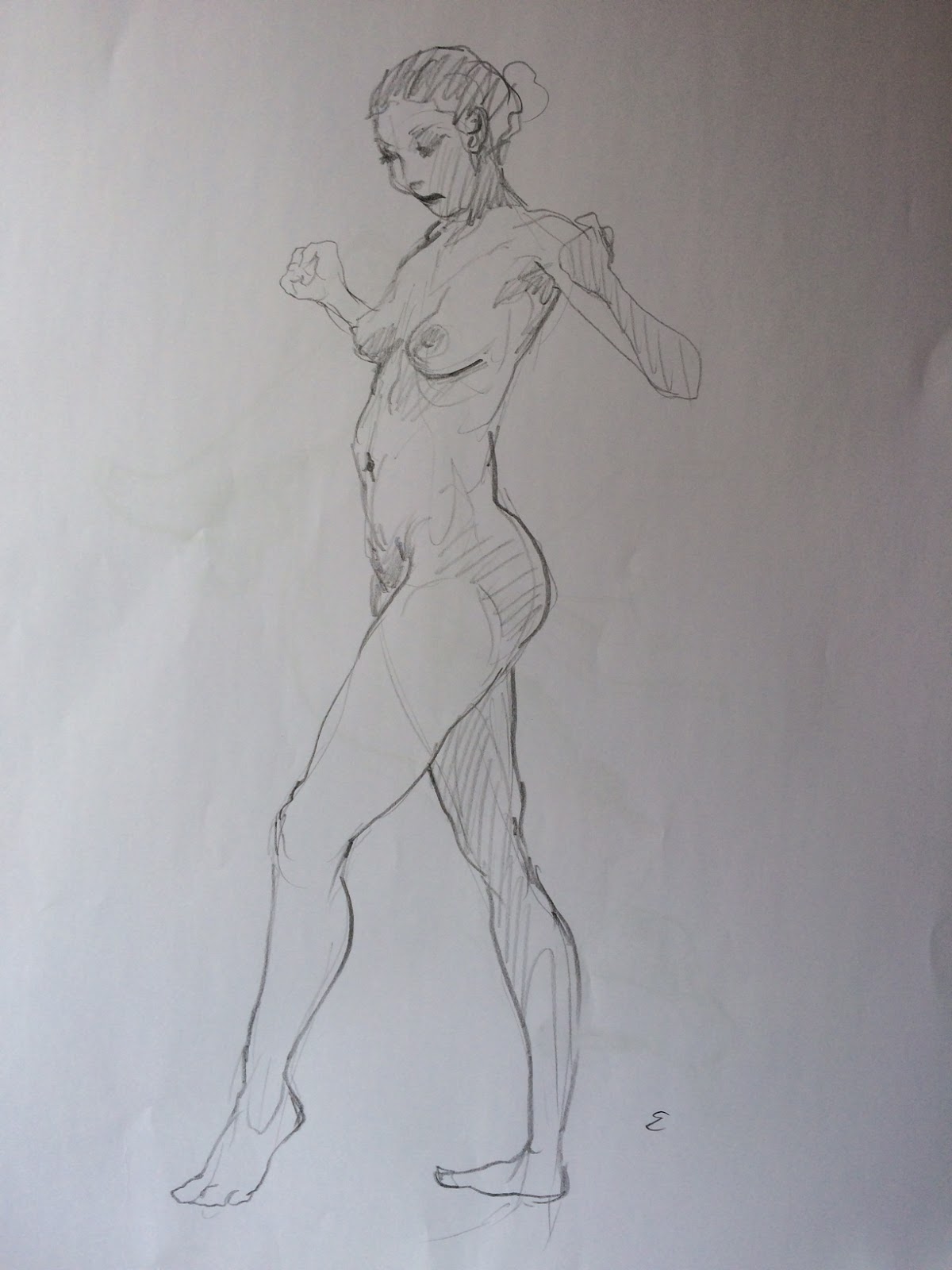
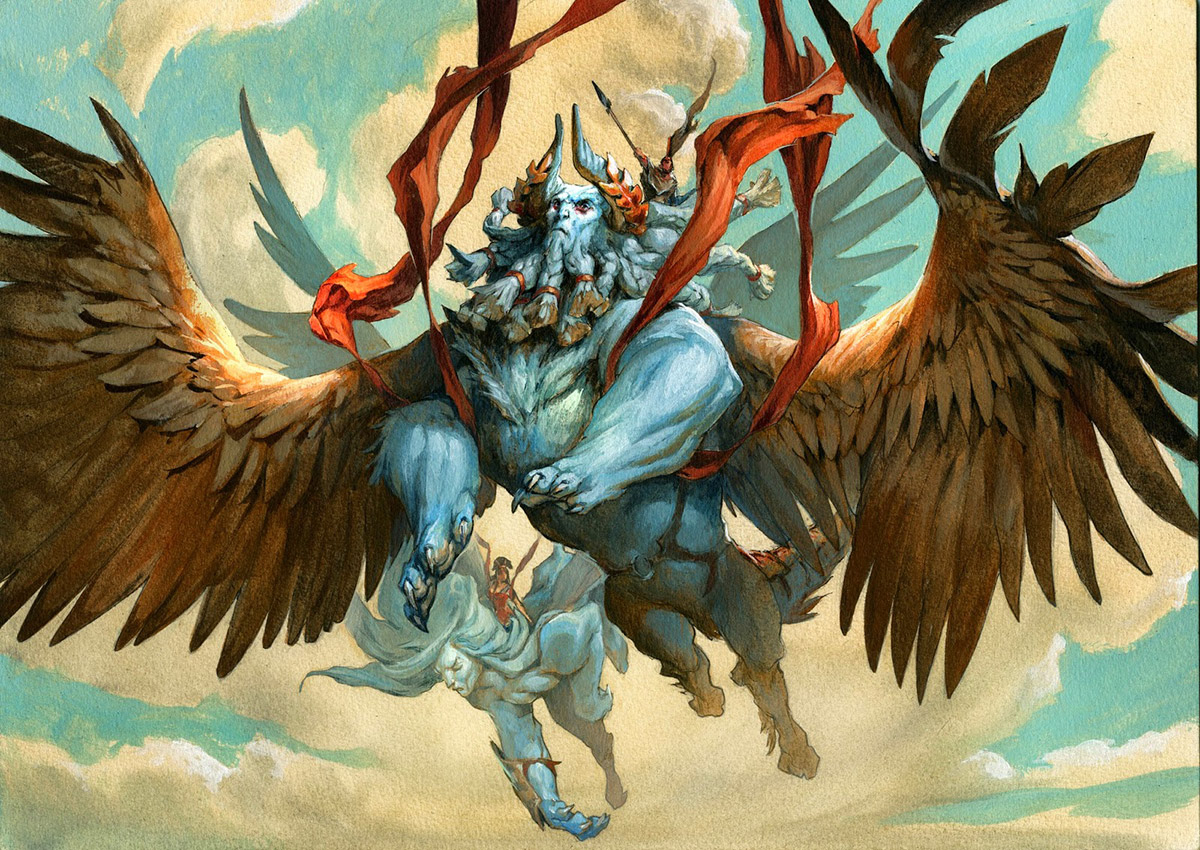

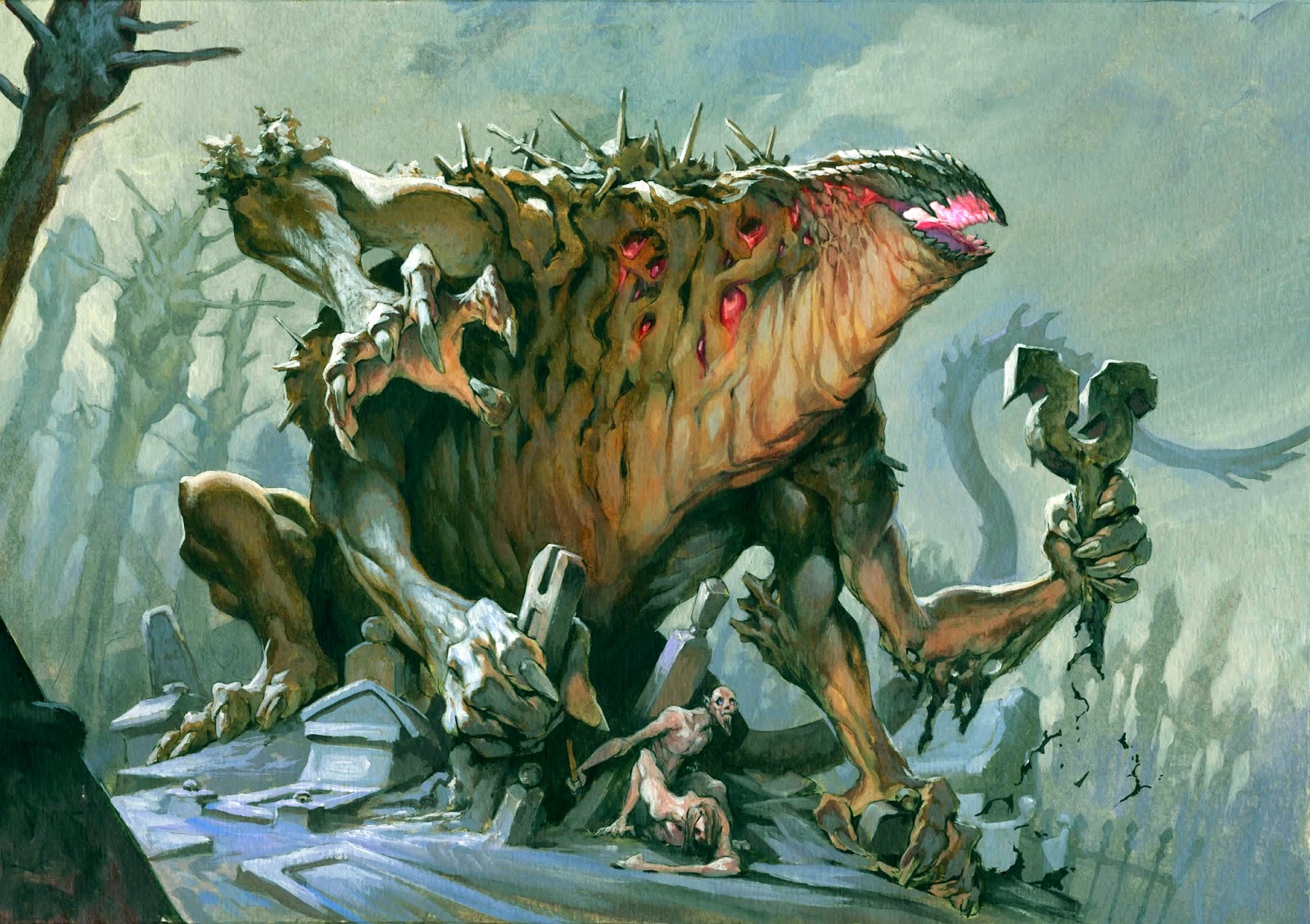
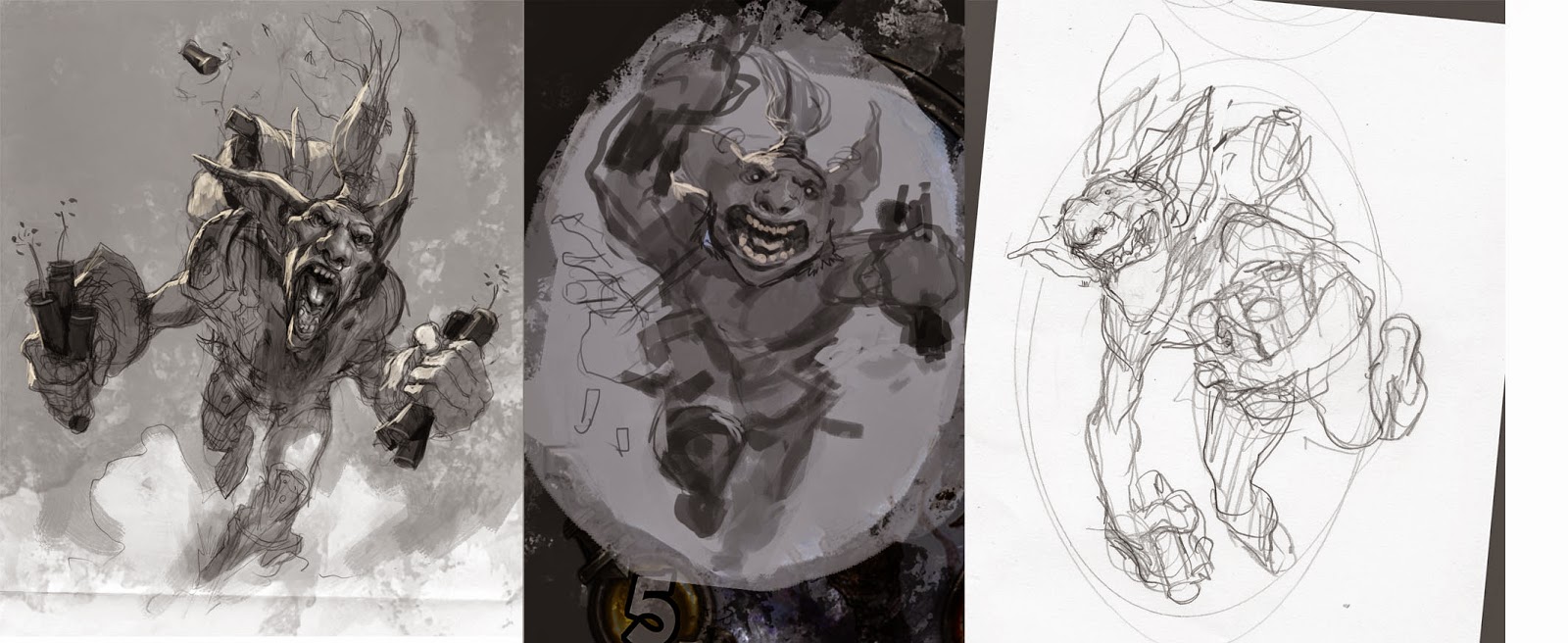
Beautiful drawings!!
Great model! And that sure does help a body draw, doesn't it. You say you don't quite get the anatomy right? Looks fine to me; and if you've got the gesture right you will get the anatomy right when you detail it.
Thanks for the insight and inspiration. Life drawing is a passion of mine and posts like this help fuel it, thank you.
Some artists seem to treat the model like an industrial design, yet people are organic not conceptualized like a car. Just wondering how much the figure should be broken down?
https://www.youtube.com/watch?v=QhF4fBetN4Y